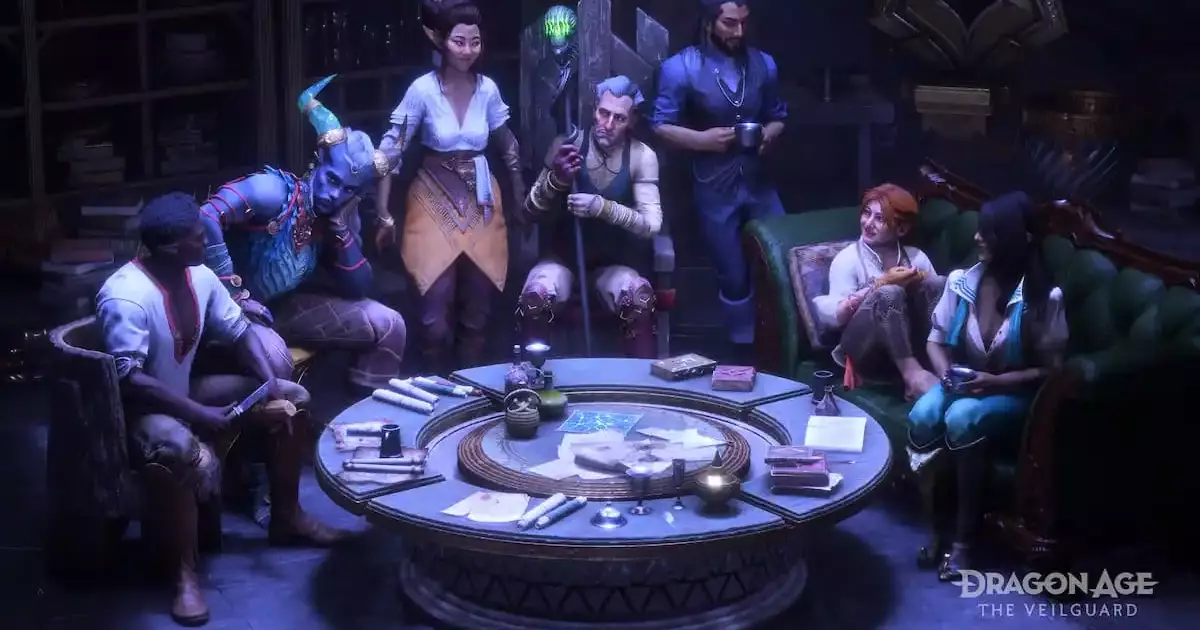The world-building in fantasy role-playing games (RPGs) has often been critiqued for its rigid structures and meticulously codified lore. However, Bioware’s Dragon Age series stands apart by embracing a certain inconsistency, which not only enriches its narrative but also fosters player engagement through ambiguity. The combination of varying perspectives on Thedas’s history creates an engaging narrative landscape, characterizing the strife and divergence among its civilizations. The intricate narratives are shaped by the differing beliefs of humans, elves, and qunari, each faction bringing its own interpretation of the series’ extensive lore.
The very essence of Thedas’s mythology appears to be built on layers of half-truths and subjective interpretations. As David Gaider, former lead writer for Bioware, noted in his discussions, the quest for truth often means delving through a multitude of conflicting narratives. Players are invited to sift through these layers to uncover clues about the central mysteries that govern the world. Gaider’s notion that “to get the truth, you kind of have to pick between the lines” speaks to a design philosophy where multiple truths coexist and contradict. As players engage with different characters, they gain access to disparate narratives that reshape their understanding of historical events.
The series instills a doubt about the veracity of any particular narrative, pushing players to construct their own beliefs and draw their own conclusions. This method stands in stark contrast to the traditional fantasy RPG structure that favors clarity and a meticulously documented world. The intentional obfuscation of history is a gamble, but it is one that has rendered Dragon Age not just a game to play, but a profound experience to ponder.
The complexities arising from competing narratives in Dragon Age evoke a deeper sense of realism in its storytelling. Historical interpretations in Thedas aren’t merely footnotes; they are fundamental elements of the gameplay experience. Players encounter characters whose perspectives are steeped in their cultural backgrounds, illuminating how belief shapes reality. These encounters serve to highlight the theme that history is rarely straightforward—an idea that resonates deeply in our contemporary world, where history is often contested.
Gaider’s perspective illuminates the value of ambiguity in the lore, showcasing the rich tapestry of competing stories that make Thedas feel alive. In doing so, Dragon Age creates a complex web of interactions that prompt players to examine their interpretations of what they believe to be true. As Bertie, the interviewer, points out, the forthcoming title, Dragon Age: The Veilguard, hints at a potential resolution of some long-standing questions about the series’ lore. The promise of ancient Elven gods who hold clues about the distant past may provide the answers players seek, but Gaider himself expresses cautious interest about the implications of resolving these longstanding mysteries.
One of Gaider’s most striking observations is his metaphorical reference to Chekhov’s Gun, which underscores the narrative principle that every element introduced should serve a purpose. He cautions about the dangers present in unveiling too much of the narrative structure. If the series moves towards definitiveness, does it risk undermining the inherent intrigue and complexity that made the world captivating? By offering hints and enigmatic details, the developers have cultivated a sense of suspense that invites speculation without ever fully delivering answers.
This uncertainty, however, is a double-edged sword. While lores rich in mystery can invite immersive storytelling, there is also a risk of alienating players who seek satisfaction in storytelling arcs. The dance between revelation and concealment is an ongoing theme in the gaming universe, eroding boundaries between gameplay and narrative as players become invested in both the characters and the lore they inhabit.
As Dragon Age continues its journey through expanding lore and intricate characters, the challenge remains: how to balance the exquisite tension between certainty and ambiguity. The upcoming release of Dragon Age: The Veilguard presents an opportunity, not just for fans to reconnect with familiar lore, but also for Bioware to redefine its narrative landscape. Will the game offer clarity, or will it further enrich the tapestry of myths that already exists?
Ultimately, Dragon Age stands as a testament to the potential of diverse storytelling in an RPG context. The series generates compelling narratives through multifaceted viewpoints rather than straightforward exposition. With each iteration, players are invited not just to follow a storyline, but to engage in a rich dialogue about belief, history, and the nature of truth itself—a conversation that is bound to continue with each new unveiling in the world of Thedas.


Leave a Reply